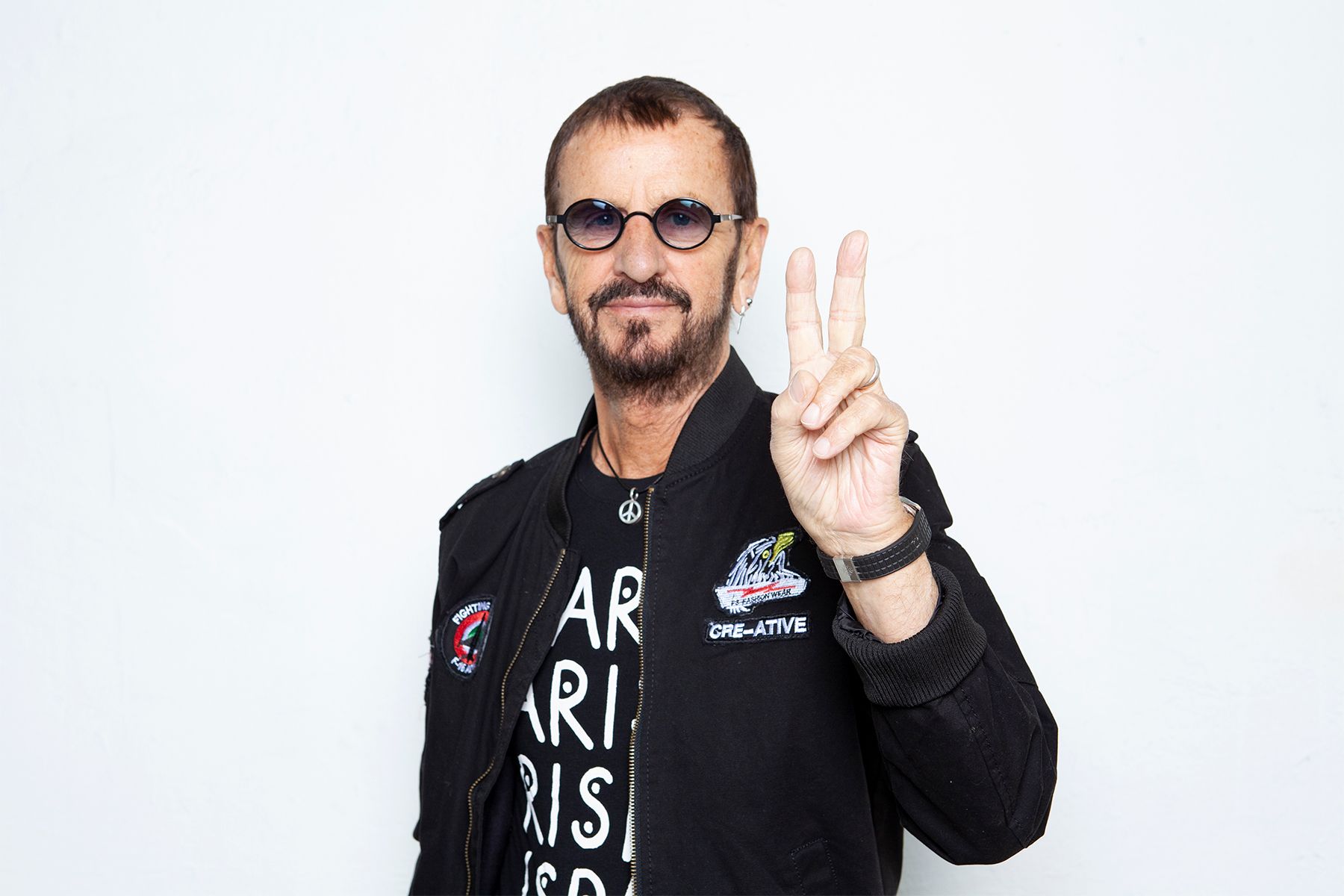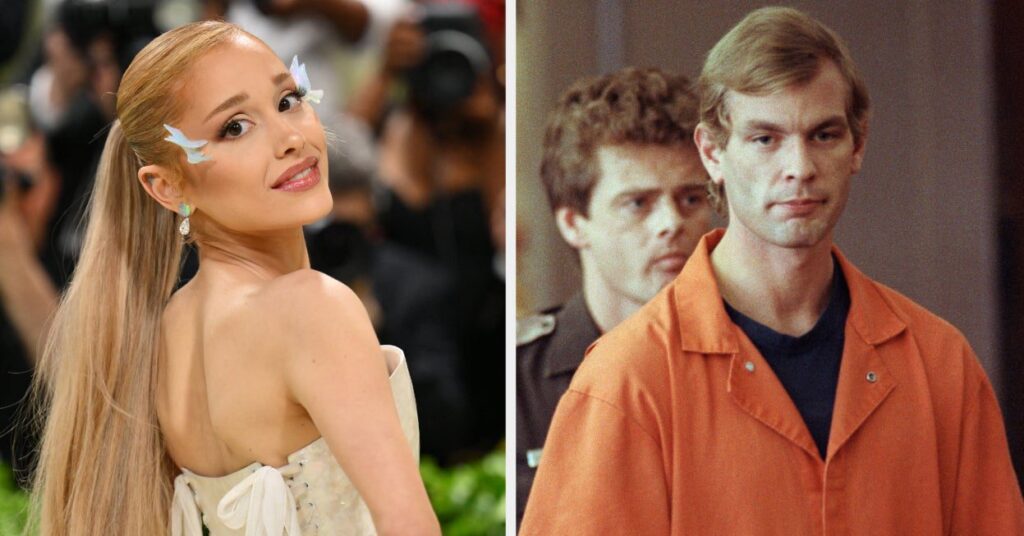‘Freedom-Loving People’: Behind the Scenes at That Controversial Smash Mouth Show in South Dakota
Related: Somebody Once Told Me: An Oral History of Smash Mouth’s ‘All Star’
Each year, hundreds of thousands of bikers come from across the country to the Black Hills of South Dakota for the Sturgis Motorcycle Rally — and the Covid-19 pandemic isn’t stopping them in 2020.
Now in its 80th year, the Sturgis Motorcycle Rally is a massive event, a kind of combination trade show, carnival, and music festival centered around Sturgis, South Dakota, a town off I-90 on the eastern edge of the state. Activities ripple across the region, though, and on August 9th — as Covid-19 cases in the United States topped 5 million and the death toll climbed above 160,000 — photos and videos from one such event spread on social media: Smash Mouth performing to a packed crowd at a campground/outdoor venue known as Buffalo Chip. The footage seemed to show little social distancing; in one video, Smash Mouth frontman Steve Harwell addressed the crowd, “Now we’re all here together tonight. And we’re being human once again. Fuck that Covid shit.”
Cue the influx of “All Star” jokes.
?HAPPENING NOW? The Buffalo Chip is attracting hundreds, if not thousands, due to the 80th Annual Sturgis Motorcycle Rally (credit KOTATV) #SmashMouth #SouthDakota #Sturgis pic.twitter.com/3QyEtW7vi7
— Connor Matteson (@mattesontv) August 10, 2020
The Buffalo Chip is one of the biggest entertainment hubs used during the Sturgis Motorcycle Rally. Located east of Sturgis, just outside city limits, a seven-minute drive from the V.A. hospital that life in Sturgis revolves around, it’s a massive campground outfitted with an amphitheater that hosts nine days of live music (along with an array of other events) during the rally. Past headliners include Aerosmith, Def Leppard, Ozzy Osbourne, Snoop Dogg, Blink-182, Stevie Nicks, and Willie Nelson; on an August night in 2010, Bob Dylan and Kid Rock played back-to-back.
The pandemic prompted most of Buffalo Chip’s major headliners — Willie Nelson and ZZ Top among them — to drop off this year’s bill, but Covid hasn’t deterred the bikers, nor a smattering of artists. Along with Smash Mouth, this year, between August 7th and 15th, Buffalo Chip will host possibly the only major U.S. music festival of 2020, with performances from Molly Hatchett, the Guess Who, Trapt, Buckcherry, Lit, .38 Special, Quiet Riot, and Reverend Horton Heat.
Following the outcry and memes over Smash Mouth’s set, Rod Woodruff, founder and president of Buffalo Chip, tells Rolling Stone that the footage offers only a partial representation of the actual scene. “We’re requiring that people have face coverings to get into the amphitheater,” he says. “We’re not requiring that they wear them, which is why, if you got photos from Smash Mouth that you didn’t see masks in, that’s ’cause people weren’t wearing them.”
However, Woodruff pushes back on the claims of minimal social distancing. “The angle of the thing shows a bunch of heads and a bunch of people, and it looks like a nice-size crowd. But as you get up above it and you look down, you see that there’s distancing built into it.… The amphitheater’s a few acres, and there’s a lot of space in there, and we got room for 10, 20 times as many people if we weren’t in the middle of this situation here, where we’re just trying to keep these CDC guidelines.”
While Covid has wreaked havoc on the live-music and events industry, there was little doubt that the Sturgis Motorcycle Rally and related festivities would take place — not that there wasn’t some pushback. Daniel Ainslie, the Sturgis city manager, says back in April the City Council discussed the possibility of canceling the rally. They consulted with business groups and state health and tourism officials and even sent a survey to residents (the town’s population is about 7,000). Just more than 60 percent of respondents said they wanted the event postponed.
But there was ultimately little they could do. Although the rally is centered in Sturgis — and in a normal year between 400,000 and 500,000 people can pass through over the course of the event — its scope extends well beyond city limits. Ainslie estimates that about 50 percent of attendees stay at campgrounds, like Buffalo Chip, outside the city. If Sturgis were to cancel the rally, it would’ve only been able to cancel the events (e.g., parades, stunt shows, and concerts) under its purview. A place like Buffalo Chip — which schedules its programming to coincide with the rally, but is technically independent of it — was free to welcome people as it pleased.
Ainslie says the City of Sturgis went to the state government about this issue and asked, “If we cancel, will you step in and revoke their state camping permits so they can’t have people there?” The response, according to Ainslie: “Absolutely not.”
“South Dakota,” as Ainslie puts it, “is a very freedom-loving state.” The government has not enacted the kind of lockdown measures that have shuttered venues and restaurants across the country, and there are no attendance caps in place either. Ainslie says the state Legislature has even “limited the powers of municipalities to enforce mask requirements or densities inside restaurants.” The city can post recommendations inside establishments, “but at that point,” Ainslie adds, “it is personal responsibility.”
Ultimately, Ainslie says it was clear that people would be coming to Sturgis. And, in fact, many were already traveling to the Black Hills for separate reasons. By May, as Covid-19 cases in the U.S. briefly plateaued around 20,000 per day and other states enacted lockdown measures, tourism to the region jumped dramatically. Ainslie noted a particular influx in out-of-state license plates from as far as New England. At the same time, he adds, the city started to receive more and more messages from people planning to attend the rally. “People saying they’re tired of being cooped up in whatever state and they were coming to Sturgis, and, ‘It doesn’t matter — we’re coming,’” Ainslie says.
Woodruff purchased the plot of land that is Buffalo Chip in 1981, and it hosted its first event the following year. At the time, the Sturgis Motorcycle Rally had experienced a few tumultuous years, prompting the city to ban camping in its public park, which allowed places like Buffalo Chip to emerge as an independent alternative.
Woodruff describes the Sturgis Motorcycle Rally as a “competitor” to the annual goings-on at Buffalo Chip, and he proudly states, “You don’t have to look too far to find somebody to say that Buffalo Chip is the rally. We do our own thing, and we’d like to have the freedom to continue to serve our customers. That’s all we want to do. We’ve got a bunch of freedom-loving people here that just want to, once a year, get away from everything and everybody, get on a motorcycle, ride some really beautiful roads in the Black Hills of South Dakota, come back, listen to some music, get a little rest, get up in the morning, have breakfast, and do it all over.”
When Buffalo Chip was founded, Woodruff says it was just “three strands of barbed wire and a few cows.” It’s grown significantly since then: There’s the campground, amphitheater, food and drink stalls, a drinking well, bathing facilities, a garage for bike tune-ups, and an annual museum-quality motorcycle exhibit. An array of camping packages are available, as are general-admission passes for those staying elsewhere. The core Buffalo Chip staff comprises 20 people, but each year about 500 workers — many from out of state — come in to help during the ground’s only event of the year.
“We got a whole freaking warehouse full of masks and gloves, and we got hand sanitizer till hell freezes over” —Rod Woodruff
In preparing for 2020, Woodruff says Buffalo Chip “did everything that was said in the CDC guidelines.” In the backstage area, he says, masks are required, bands and their crews undergo temperature checks, and catering has been replaced with boxed lunches to minimize contact. For attendees, the food stands have always been carry-out, and when asked if there are partitions to keep employees and attendees separate, he replies, “All of that.”
Woodruff says Buffalo Chip has “a whole freaking warehouse full of masks and gloves, and we got hand sanitizer till hell freezes over.” The medical tent has a quarantine room, should anyone start exhibiting symptoms, and there are an array of EMTs and ambulances on hand — and a doctor to supervise.
He continues: “You can’t go anyplace without seeing the signs, saying, ‘Hey, don’t forget CDC guidelines say this.’ So we got all of that stuff. And nobody seems to mind. I mean, everybody knew what all that stuff was before they came. So it isn’t like anybody came and got surprised.”
Although Woodruff declined to give any attendance numbers for Buffalo Chip, he says that “there are fewer people here than normal.” Asked if he was still concerned about people traveling from all over the country to Buffalo Chip, considering the severity of outbreaks in different regions of the country, Woodruff responds, “Well, what do you think? You think if somebody’s sick, they’re going to get on a motorcycle and ride 1,500 miles to camp out?”
What about people who are asymptomatic, but still have the virus? Couldn’t they still infect the crowd?
“That’s true,” Woodruff says. “That’s true. So, you know, here we are, everything’s outdoors. We’re in the safest environment, according to the CDC guidelines. We’re in the safest environment that exists. Everything is outdoors, fresh air. Everybody is camping a few feet away from everybody else. And when you’re out riding around on a motorcycle … I look out my window here and I can see two dozen people, one of them’s got a lady passenger, and everybody else is alone on their motorcycle.”
(South Dakota has no limits on large gatherings, and Gov. Kristi Noem recently cited President Trump’s July 4th rally at Mount Rushmore as evidence that the state could safely handle such events. CDC guidelines classify “medium-sized in-person gatherings that are adapted to allow individuals to remain spaced at least six feet apart and with attendees coming from outside the local area” as “higher risk” events for spreading Covid-19, while “large in-person gatherings where it is difficult for individuals to remain spaced at least six feet apart and attendees travel from outside the local area” are “highest risk.”)
View this post on InstagramFreedom #sturgis #freedom #america
Asked later if he’d obtained Covid-19 tests for himself or his employees, Woodruff says, “Nobody that I know of has asked for those. And we’re not really afraid of it here. I mean, we’re outdoors. We know what to do to stay safe, so do our customers, and we feel like we’ve been safe.… And I expect when this event is over, we’re going to be preparing for next year’s event. And frankly, I expect there’ll still be Covid stuff lingering next year. So what we’re doing this year is a learning lesson for next year. No question.”
The goal this year, as any year, Woodruff says, is to “serve the people that want to be here. We didn’t force anybody to come, but our responsibility is to be here for people and give them the best event we can give them. And that’s what we try to do every year. And this year’s no different, other than there was a lot of time spent monkeying around with CDC guidelines and the media.”
Asked later if the thought of an outbreak at Buffalo Chip potentially harming his attendees ever weighed on him, Woodruff replies, “Tourism has been up in the entire Black Hills for a long time. The Sturgis rally actually encompasses 7,000 square miles. You can travel anywhere.… So they’re not just at my place. The answer to your question is, ‘Have I thought about it?’ Certainly. ‘Am I concerned about it?’ No. And just like the city said, this is going to happen whether we’re here or not. We’re just giving people a good place to go that they can depend on and know what to expect.”
Before getting off the phone, Woodruff takes another swipe at the media, saying “they’re trying to scare people into thinking this is going to be some kind of super-spreader deal.… I understand people haven’t been here. [They] don’t know what it’s like. And so much of it is fear. And then more of it is just trying to create more fear for whatever reason.”
As for concerns raised by people in cities like New York that have seen the devastation Covid-19 can cause, Woodruff says, “I spent 45 minutes yesterday talking with a doctor who practiced in Bellevue who was called back in April and spent a few months there. And, you know, those mortuary trailers, refrigerated trailers out front of the hospital, are real.… But he’s here, he wasn’t wearing a mask, and he shook my hand, and we had a conversation. And we have other doctors here who’ve been treating Covid for months, and they’re here the same way. It’s just like the guy that had practiced in Bellevue: He’s here, he understands what Covid is, and what you need to do to minimize your risk of getting it. And, like I said, he’s here having a vacation, riding a motorcycle with a lot of other people.”
It’s still too early to estimate how many people will pass through Sturgis during the rally this year, although Ainslie, the city manager, says the numbers that he’s seen so far suggest they’re only down about three to five percent from 2019. That said, the crowds he’s seen downtown — which can be viewed from afar via a handful of webcams — are way less packed than usual.
“When you go into the venues, they’re not filled like they usually are,” he says. “I think people are seeing that and making that choice, saying the capacities are getting to the point that they’re fairly full and they don’t feel comfortable. So they’re moving on, and that’s just perfectly great.”
When it became clear the South Dakota government wasn’t going to do anything to fully halt the rally, Sturgis did what it could to effectively discourage most mass gatherings in the city. It stopped advertising the rally and canceled all the events and concerts under its purview; Ainslie says some restaurants and bars followed suit, significantly slashing their entertainment bills as well.
To deal with the crowds that would arrive, Sturgis — as it does in normal years — brought in extra police and other out-of-state workers to help with things like sanitation. All were tested beforehand, and everyone undergoes daily wellness screenings. The city stockpiled PPE and vats of hand sanitizer, and scattered sanitizer stations throughout downtown. An already-active, free, citywide shopping/contactless-delivery program to get groceries and other necessities to the elderly and immunocompromised was expanded. And should a severe breakout suddenly occur, protocols are in place to add 500 extra ICU beds to local medical centers in 48 hours.
Sturgis also paid for a couple thousand Covid-19 tests that are available to residents and local businesses for free (they’ll be administered about a week after the rally ends, per a recommendation from health experts to allow for an incubation period). All municipal employees will be required to take one, and Ainslie says about two-thirds of the employees of local businesses have registered for tests as well. While only a few hundred members of the general public have requested tests so far, Ainslie says that could be because most Sturgis residents are avoiding the rally entirely.
For the rest of the week, Ainslie says, the city is focused on ensuring that its employees and residents stay safe: “We’re trying to make sure that people are able to get whatever necessities they need and they’re able to hopefully stay away from the crowds as much as possible. We’ve been providing PPE to all the local businesses, anyone that has run out of gloves or masks, which has happened just because there’s so many more people than we anticipated.”
As much as it possibly can be, Sturgis seems prepared to weather the rally and handle a possible outbreak. But it remains to be seen if those who venture to Sturgis seeking the freedom to mingle, ride bikes, and listen to Smash Mouth will be virus-free when they leave.





